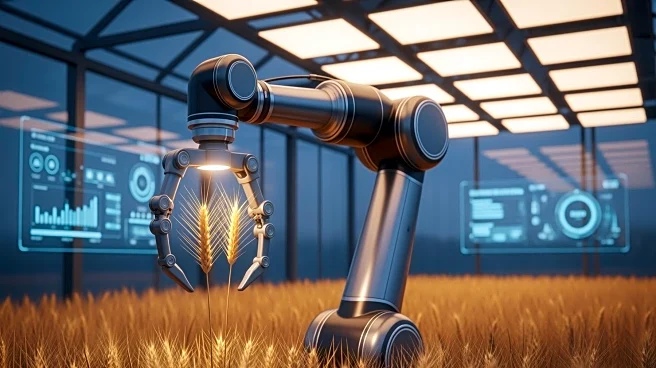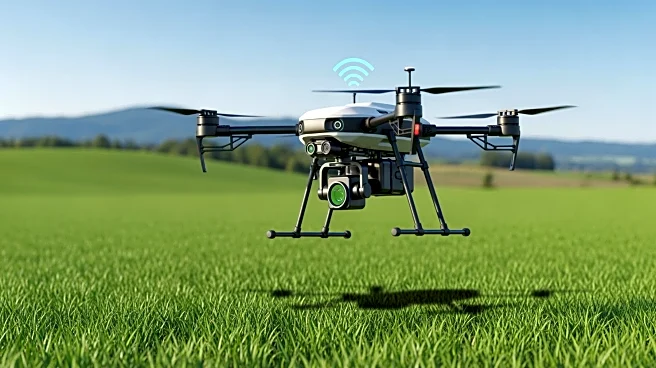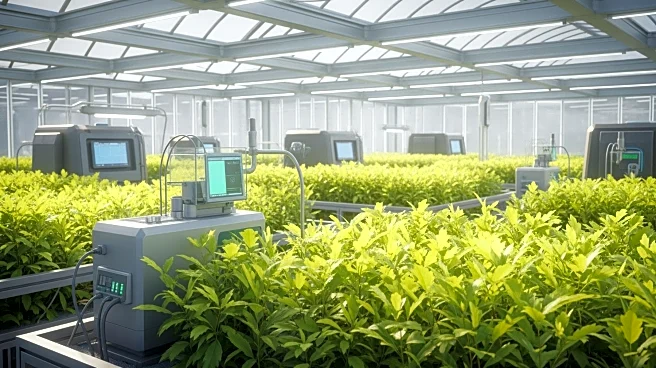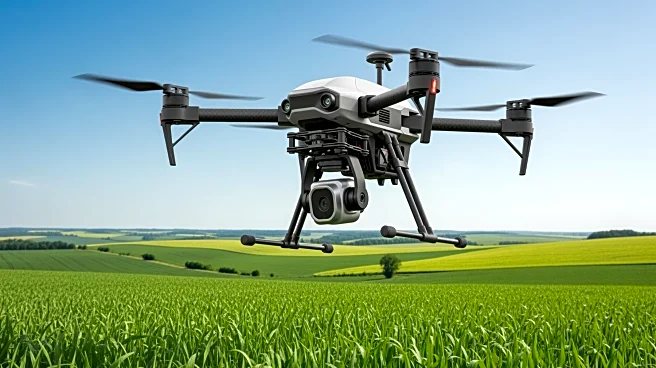What's Happening?
The Saudi Arabia agriculture equipment market is expected to grow significantly, reaching USD 2,424.3 million by 2033, with a compound annual growth rate (CAGR) of 4.1%. This growth is driven by the adoption
of AI-powered precision farming tools, which enhance crop yields and optimize resource use. Government initiatives are supporting this trend by funding startups and modernizing equipment across farms. Partnerships with global AI innovators are facilitating the launch of smart irrigation systems, reducing water waste. The market is also benefiting from government subsidies and incentives aimed at boosting national food security.
Why It's Important?
The expansion of the agriculture equipment market in Saudi Arabia is crucial for enhancing food security and sustainability in a region where water conservation is vital. The integration of AI technology in farming practices is expected to increase efficiency and productivity, making advanced techniques accessible to smallholders. This growth supports the country's Vision 2030 goals, which focus on diversifying the economy and reducing dependency on oil. The market's development could attract further investment and innovation, positioning Saudi Arabia as a leader in agri-tech advancements.
What's Next?
As the market continues to grow, further investments in AI and smart farming technologies are anticipated. The government's focus on food security may lead to additional funding and support for agricultural modernization. Global equipment manufacturers are likely to increase their presence in Saudi Arabia, offering tailored solutions for local conditions. These developments could foster greater collaboration between local and international stakeholders, driving innovation and efficiency in the agriculture sector.
Beyond the Headlines
The rise of AI in agriculture raises ethical considerations regarding data privacy and the potential displacement of traditional farming practices. The emphasis on technology may also lead to disparities in access, with smaller farms potentially facing challenges in adopting new systems. Additionally, the focus on modernization could impact cultural practices and the traditional agricultural landscape.











